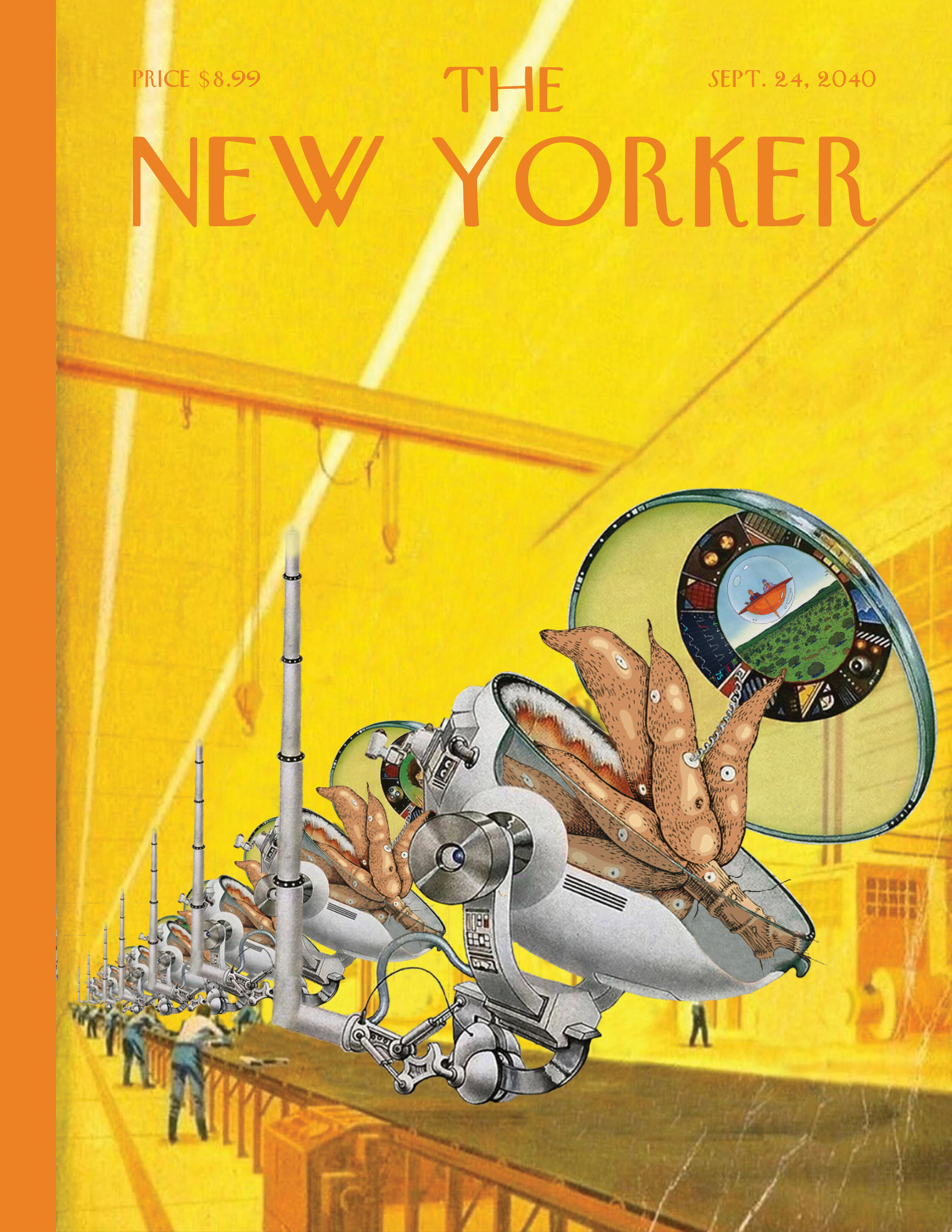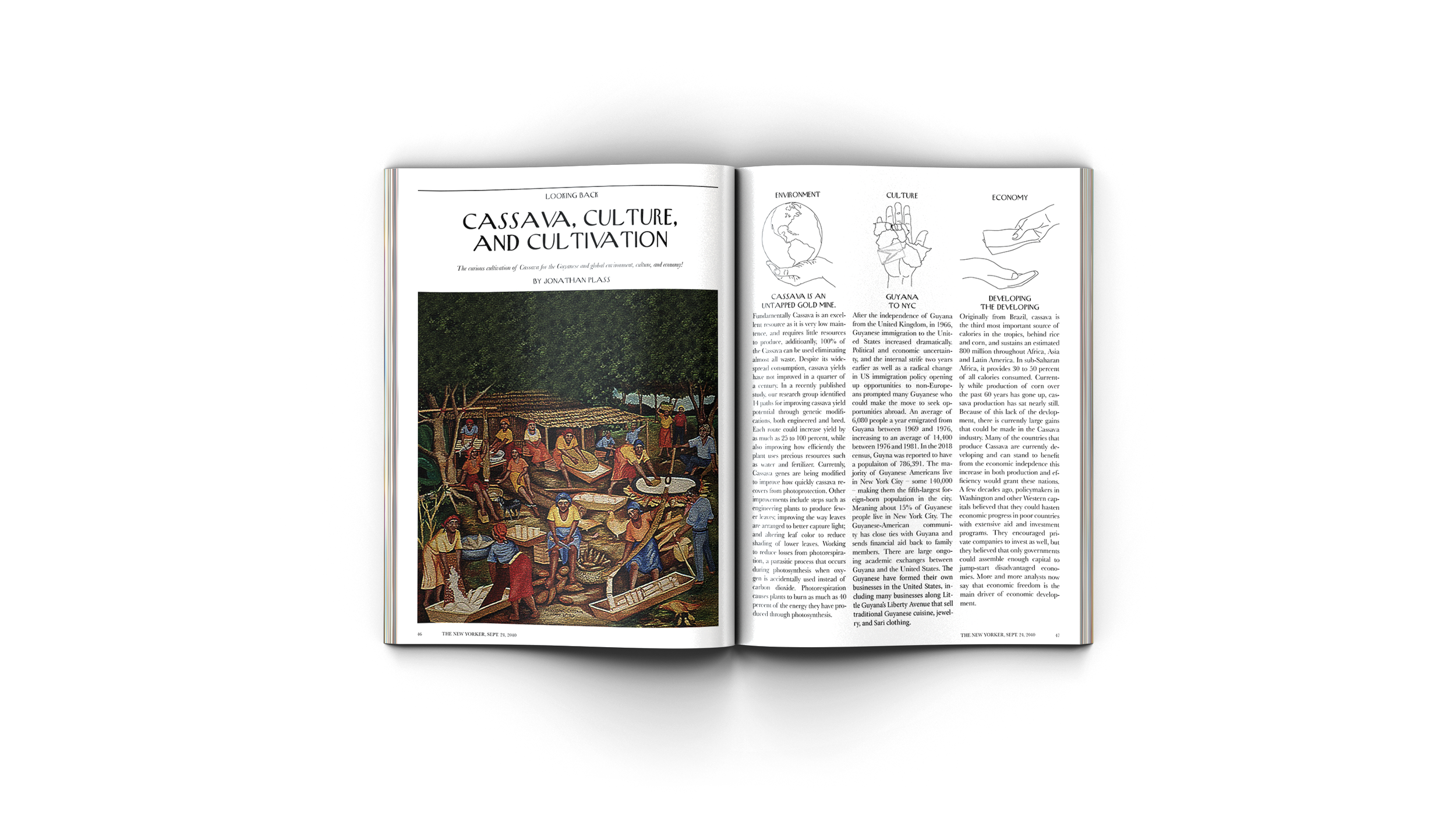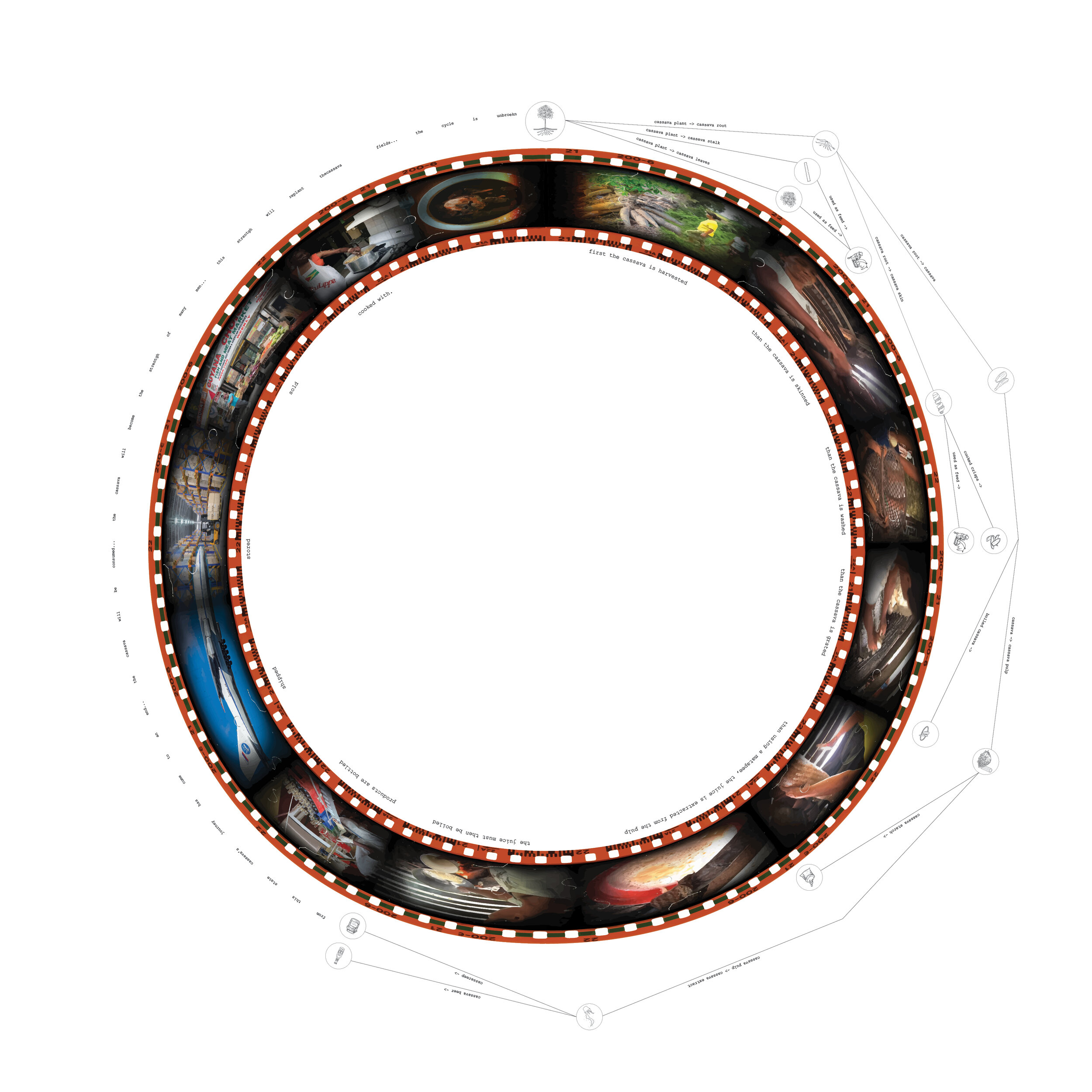
Curious cultivation of cassava for the Guyanese environment, culture, and economy
CASSAVA
Spring, 2020
PROJECT DETAILS:
ARCH 4101: Design VII
Site N/A
Michael Murphy
Caitlin Taylor
SKILLS/SOFTWARE:
AutoCAD (2D Drafting)
InDesign (Layout)
Photoshop (Graphics)
Premiere Pro (Video)
Environment | Cassava is an Untapped Goldmine
Fundamentally Cassava is an excellent resource as it is very low maintenance, and requires little resources to produce, additionally, 100% of the Cassava can be used eliminating almost all waste. Despite its widespread consumption, cassava yields have not improved in a quarter of a century. In a recently published study, our research group identified 14 paths for improving cassava yield potential through genetic modifications, both engineered and bred. Each route could increase yield by as much as 25 to 100 percent, while also improving how efficiently the plant uses precious resources such as water and fertilizer. Currently, Cassava genes are being modified to improve how quickly cassava recovers from photoprotection. Other improvements include steps such as engineering plants to produce fewer leaves; improving the way leaves are arranged to better capture light; and altering leaf color to reduce shading of lower leaves. Working to reduce losses from photorespiration, a parasitic process that occurs during photosynthesis when oxygen is accidentally used instead of carbon dioxide. Photorespiration causes plants to burn as much as 40 percent of the energy they have produced through photosynthesis.
Economy | Developing the Developing
Originally from Brazil, cassava is the third most important source of calories in the tropics, behind rice and corn, and sustains an estimated 800 million throughout Africa, Asia and Latin America. In sub-Saharan Africa, it provides 30 to 50 percent of all calories consumed. Currently while production of corn over the past 60 years has gone up, cassava production has sat nearly still. Because of this lack of the development, there is currently large gains that could be made in the Cassava industry. Many of the countries that produce Cassava are currently developing and can stand to benefit from the economic independence this increase in both production and efficiency would grant these nations. A few decades ago, policymakers in Washington and other Western capitals believed that they could hasten economic progress in poor countries with extensive aid and investment programs. They encouraged private companies to invest as well, but they believed that only governments could assemble enough capital to jump-start disadvantaged economies. More and more analysts now say that economic freedom is the main driver of economic development.
Culture | Guyana to New York City
After the independence of Guyana from the United Kingdom, in 1966, Guyanese immigration to the United States increased dramatically. Political and economic uncertainty, and the internal strife two years earlier as well as a radical change in US immigration policy opening up opportunities to non-Europeans prompted many Guyanese who could make the move to seek opportunities abroad. An average of 6,080 people a year emigrated from Guyana between 1969 and 1976, increasing to an average of 14,400 between 1976 and 1981. In the 2018 census, Guyana was reported to have a population of 786,391. The majority of Guyanese Americans live in New York City – some 140,000 – making them the fifth-largest foreign-born population in the city. Meaning about 15% of Guyanese people live in New York City. The Guyanese-American community has close ties with Guyana and sends financial aid back to family members. There are large ongoing academic exchanges between Guyana and the United States. The Guyanese have formed their own businesses in the United States, including many businesses along Little Guyana’s Liberty Avenue that sell traditional Guyanese cuisine, jewelry, and Sari clothing.










